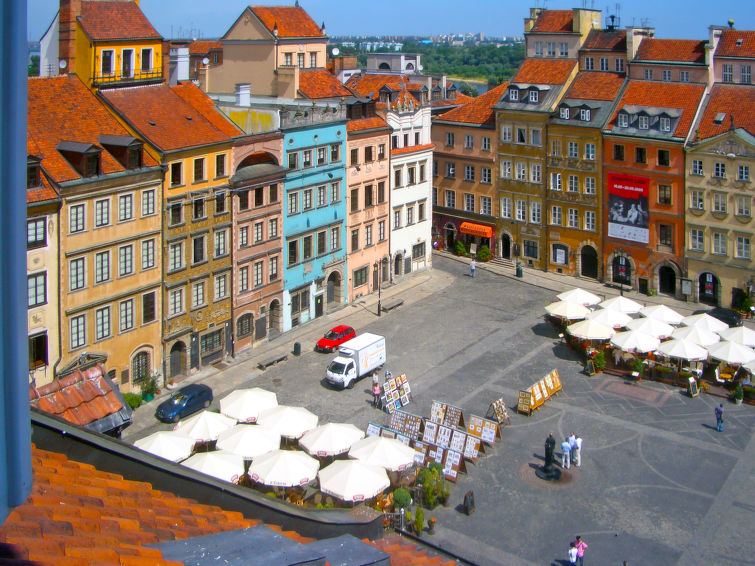
Polish cuisine: regional specialties
Polish cuisine is famous for its heartiness, richness, and colorful dishes. When thinking of Polish food, you might immediately think of the delicious taste of pierogi. However, Poland’s typical dishes are much more diverse than that. While you can find some Polish specialties throughout the country, the food varies greatly by region. Most dishes are based on various types of meat and sausage, with vegetables like sauerkraut, beets, mushrooms, cucumbers, and kohlrabi forming essential ingredients. Bread, sour cream, and different herbs add even more flavor to traditional Polish food.
Table of contents
- Żurek – Sourdough bread soup
- Zrazy – Hunter’s meal of beef or wild boar
- Barszcz – Beet soup
- Pierogi – Filled dumplings
- Pączki – Jam-Filled pastry
- Bigos – Hearty stew, the king of Polish food
- Obwarzanki Krakowskie – Traditional Polish pretzels
- Sandacz po polsku – Pike-Perch with chopped egg
- Gołąbki – Cabbage rolls in tomato sauce
- Mizeria – Cucumber salad
- Holiday homes & apartments in the region
Żurek – Sourdough bread soup
One of the most exotic Polish foods for many is Żurek, a sour soup made from fermented rye flour and sourdough. It’s enriched with sausage, potatoes, and carrots, giving it a hearty and savory flavor. Some versions include a hard-boiled egg, and horseradish is often added for extra warmth, especially during the colder months. Traditionally, this filling soup is eaten at Easter, and some restaurants even serve it in a bread loaf.

Zrazy – Hunter’s meal of beef or wild boar
Zrazy is a popular Polish food, also known as a hunter’s meal. It consists of a slice of beef or wild boar fillet rolled around a filling of bacon, pickles, and mushrooms, then cooked. This dish can also be found in the cuisines of Lithuania, Belarus, and Ukraine, but it originally comes from Poland, where it was often eaten as a noble breakfast. A dollop of sour cream typically enhances the flavor.
Barszcz – Beet soup
Barszcz is another well-known Polish soup classic. This beet soup, not to be confused with its Russian cousin borscht, is meat-free and gets its rich flavor from allspice and garlic. In some regions, it is enjoyed with small dumplings, adding to the uniqueness of this traditional Polish food.

Pierogi – Filled dumplings
If there’s one national dish that defines Polish food, it’s definitely pierogi. These dumplings resemble Italian ravioli in shape but feature a much richer, heartier filling. The most well-known type, Pierogi Ruskie, is filled with mashed potatoes and cheese. However, there are many other varieties, including fillings like mushrooms, meat, or cabbage. For dessert lovers, sweet pierogi with fillings such as cheese and raisins or poppy seeds are also popular and can be ordered as either a main course or dessert.
Pączki – Jam-Filled pastry
One of the most famous Polish desserts is pączki, a fried pastry similar to American donuts. Filled with jam or vanilla cream, they are traditionally served on the Thursday before Lent, topped with glaze or powdered sugar. Originally, they were made to use up eggs, butter, and sugar before fasting began. Pączki are essential to the Polish carnival season, as tradition holds that skipping one means a year of bad luck!

Bigos – Hearty stew, the king of Polish food
The hearty stew Bigos is widely popular in Poland and often called the king of Polish food. It combines key Polish ingredients: sauerkraut, cabbage, various meats, sausages, and bacon. In southern Poland, you’ll find variations of the dish that include mushrooms or dried plums. All the ingredients are cooked for hours—or even days—allowing the flavors to blend perfectly. Bigos has a long tradition in Poland and is usually served with bread or potatoes.
Obwarzanki Krakowskie – Traditional Polish pretzels
The Obwarzanki Krakowskie has a rich history, first documented in the 14th century. Due to a royal privilege, only bakers in Krakow could make these pretzels. Two strands of dough are twisted into a ring, boiled briefly in salt water, then sprinkled with salt, poppy seeds, or sesame before baking. It’s a staple of Krakow street Polish food.

Sandacz po polsku – Pike-Perch with chopped egg
Thanks to Poland’s proximity to the Baltic Sea, certain types of fish have become part of traditional Polish food. One popular fish dish is Sandacz po Polsku, or pike-perch with chopped egg. Freshly caught in the Polish Baltic, the fish is cleaned, cooked with various vegetables, and served with chopped egg and melted butter.
Gołąbki – Cabbage rolls in tomato sauce
This traditional Polish dish of cabbage rolls dates back to the Byzantine Empire and is highly valued in Polish cuisine as a festive food. Cabbage leaves are filled with a mixture of rice and meat, then served in a delicious tomato sauce.

Mizeria – Cucumber salad
This refreshing cucumber salad is a perfect Polish food dish for hot summer days. It consists of thinly sliced cucumbers, chopped onions, and dill, with a dressing of sour cream and lemon juice for a fresh, summery taste. It’s often served as a side dish with hearty mains like Bigos or Zrazy. The name comes from the French word “misère” (misery), reflecting the historical disdain Polish nobility had for this simple dish.
Let us know how you liked this article
Share this article with family, friends or colleagues
Inspiration
Travel destinations and ideas
Article






